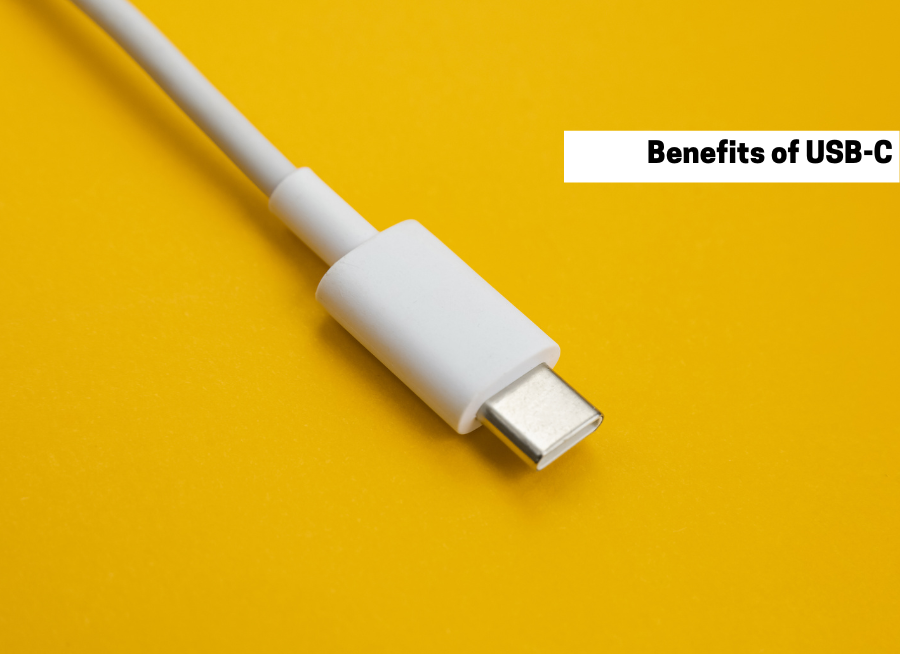The benefits of USB-C

USB-C, also known as USB Type-C, is a versatile and widely adopted connectivity standard that offers a range of benefits. Here are some of the key advantages of USB-C:
Reversible Connector: One of the most noticeable advantages of USB-C is its reversible design. You can plug it in either way, making it more user-friendly and eliminating the frustration of trying to insert the cable the wrong way.
Universal Compatibility: USB-C is a universal standard that can be found on a wide range of devices, including laptops, smartphones, tablets, monitors, and peripherals. This universality simplifies cable management because you can often use a single USB-C cable for multiple devices.
Faster Data Transfer: USB-C supports higher data transfer speeds compared to its predecessors, such as USB 2.0 and USB 3.0. USB 3.1 and USB 3.2 Gen 1 and 2 offer data transfer rates of up to 5Gbps and 10Gbps, respectively, while USB 4 can provide even higher speeds.
Faster Charging: USB-C supports higher power delivery, allowing for faster charging of devices. It can deliver up to 100 watts of power, which is more than sufficient to charge laptops and other power-hungry devices quickly. This feature is particularly valuable for mobile professionals.
Audio and Video Support: USB-C can carry audio and video signals, enabling the use of USB-C cables for connecting devices to external displays, projectors, and audio equipment. This versatility makes it a great choice for multimedia applications.
Reduced Cable Clutter: Because USB-C can handle multiple functions (data transfer, charging, video, and audio), you can reduce cable clutter by using a single USB-C cable for various tasks, which simplifies your setup and reduces the number of cables you need to carry.
Compact Design: USB-C connectors are relatively small and compact, making them suitable for thin and lightweight devices. This design choice has been particularly beneficial for ultrabooks, tablets, and smartphones.
Compatibility with Older USB Standards: You can use USB-C with older USB-A and USB-B devices by using adapters or compatible cables, which helps bridge the gap between legacy and modern technology.
Multi-Platform Compatibility: USB-C is used across various operating systems and platforms, making it easy to connect devices to both Windows and macOS systems. It's also found on many Android and iOS devices.
Forward Compatibility: USB-C is designed to be future-proof, which means it can support upcoming technologies and higher data transfer speeds as they are developed.
Thunderbolt 3 and 4: USB-C ports are often combined with Thunderbolt technology, providing even faster data transfer rates (up to 40Gbps), additional power delivery, and support for multiple displays. This makes it a great choice for high-performance computing and creative work.
Hot Swapping: USB-C supports hot swapping, which means you can connect and disconnect devices without having to power down your computer. This feature adds to the convenience of using USB-C peripherals.
In summary, USB-C offers a range of benefits, including faster data transfer, faster charging, universal compatibility, and a compact, reversible design. These advantages have led to its widespread adoption in various devices, making it an increasingly important and versatile standard in the world of connectivity.
** Note: All advantages are subject to the equipment being used.

